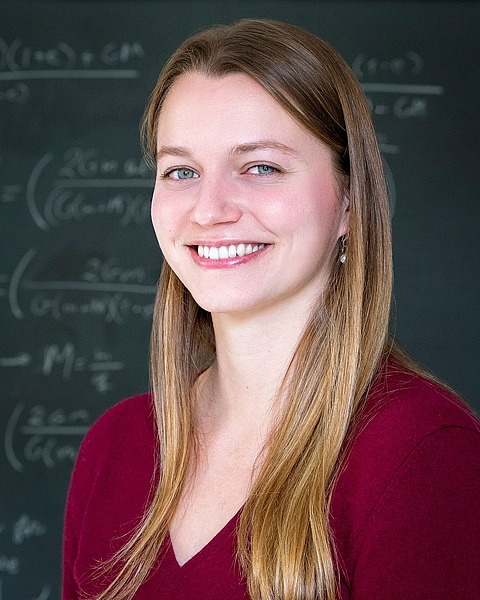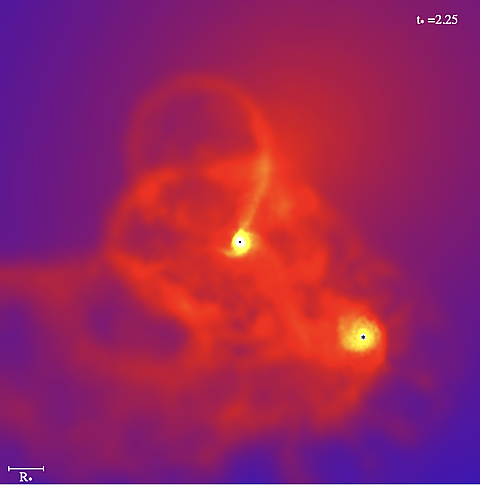Q&A with Sophie Lund Schrøder

Sophie Lund Schrøder is an astrophysicist who uses numerical methods and analytic modeling to study high-energy astrophysical phenomena, especially the evolution of stellar binaries. She gained her Ph.D. from the Niels Bohr Institute at the University of Copenhagen and has now joined IAS as a Friends of the Institute for Advanced Study Member in the School of Natural Sciences. In 2021, she worked as part of a team of scholars to explain the formation of heavy neutron star binary systems, interpreting results from gravitational wave observatories that had previously puzzled scientists.
How do you describe your work to friends and family?
I work on binary stars which are two stars orbiting each other in circles, similar to how the Moon orbits Earth. The most well known example of a binary star system is the two suns that Luke Skywalker looks at from Tatooine in Star Wars.
What motivates you as a researcher?
Interacting with other scientists and hearing how their projects are going. I really like talking with other people to learn how their research fits together with my projects.
Where is your favorite place to think?
In groups with others. Or when I have to do difficult math, in my office alone so I can work it through slowly.
What other activities or pastimes do you enjoy?
I like cooking, exercising, visiting new places, and going for long walks listening to audiobooks.
What is your favorite part about your career and work?
I love traveling and getting to meet and interact with other scientists during visits or at conferences. I also really enjoy when a puzzle is solved, like when a difficult mathematical description of a physics problem simplifies to something that can easily be understood.
